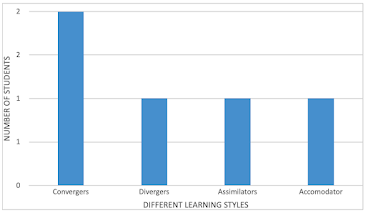Designing a Differentiated Lesson Plan Reflection
Lesson Plan Reflection
The idea that a classroom has diverse learning needs, preferences, and styles guided the lesson plan formulation. As such, the teacher should devise each lesson level to accommodate the different learning needs and styles. The first step in differentiating instructions and evaluation approaches is understanding the diverse learning needs and preferences. My class had a range of needs ranging from gifted to special needs. Therefore, I used a combination of styles like visuals, kinesthetics, and auditorial in lesson presentations. For instance, I used a PowerPoint presentation that incorporated animated images to demonstrate the link between themes and other story elements as students took short notes and asked questions on issues that required clarification. This technique enabled me to keep the class engaged as I simultaneously cater to the different learning needs and preferences. Regarding assessment, I was guided by the fact that learners have varying production preferences. Therefore, I used a combination of approaches ranging from questions and answers to a Likert scale where individuals could rate their level of understanding. By merging different assessment techniques that provide the necessary information with the least effort and time, I can address most of the problems before finalizing the lesson.
Regardless of the inclusivity of lesson presentation and assessment techniques, their effectiveness can only be attained once the teacher gets learners to remain engaged throughout the lesson (Canales, 2020). Yamauchi et al. (2016) define engagement as an intellectual, social, and emotional readiness to learn, characterized by curiosity and drive to learn more, as evidenced by the learners' willingness to participate. I got my students engaged by making the lesson relevant to them. For instance, I explained the objectives and how they related to contemporary texts and explored the similarities between the selected texts and actual life events. I devised multiple approaches to rating students' mastery of content during the assessment. For instance, I had multiple choice questions, question-and-answers, Likert Scales, and reflections which I let learners use to estimate their level of understanding. Therefore, gifted and first learners opted for reflections, while special needs preferred Likert scales and multiple-choice questions. Instead of limiting learners to a specific assessment technique, I prefer to give them the freedom to choose.
Technology provided significant support in lesson presentation and assessment as it provided a basis for differentiating instructions (Zhu et al., 2021). Besides the e-books, I used Pickers, ed-tech, and Book Creators to assess students' mastery of the lesson's concept. These technological tools cater to varying production preferences as students could opt for different production methods, like providing summaries to writing journals. By merging these technological tools with traditional assessment options, I would have catered to the diverse preferences in my class. For example, I could encourage gifted learners to use BookCreators, where they can write journals delving deeper into the taught concepts to explore other angles not covered in class. At the same time, learners with special needs and English Language Learners could use options like Likert Scales and reflections, respectively. In this case, special needs learners would get a simplified means to express their level of mastery, while ELLs will get an opportunity to practice self-expression in the target language. I look forward to delivering the lesson and determining the effectiveness of the selected approaches, which will provide opportunities for future rectifications.
References
Canales, Y. (2020). The Relationship Between Instructional Delivery And Student Engagement In Selected Classrooms: A Cross Case Analysis. William & Mary, pp. 1-202. Retrieved from https://scholarworks.wm.edu/cgi/viewcontent.cgi?article=6917&context=etd
Yamauchi, L. A., Taira, K., & Trevorrow, T. (2016). Effective Instruction for Engaging Culturally Diverse Students in Higher Education. International Journal of Teaching and Learning in Higher Education , 460-470.
Zhu, M., Berri, S., & Zhang, K. (2021). Effective instructional strategies and technology use in blended learning: A case study. NCBI, 6143–6161.

Comments
Post a Comment